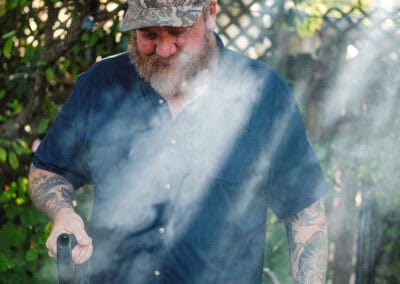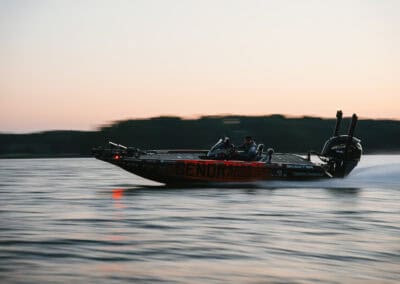Your cart is empty
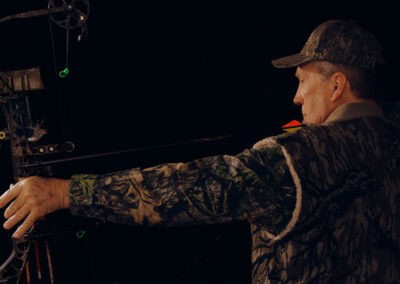
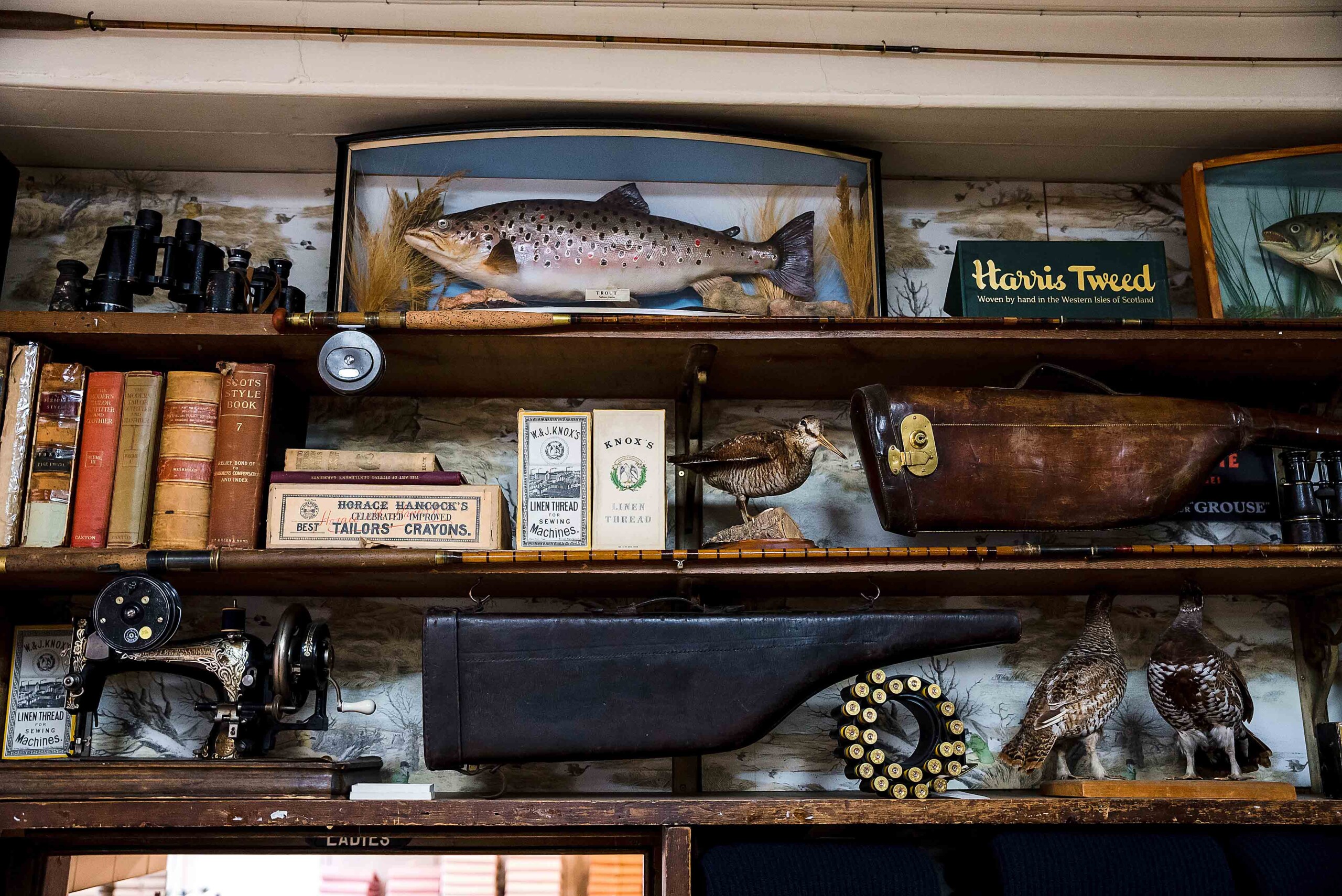
In the Scottish Highlands, traditions remain strong, and hunting and fishing — particularly stalking — are part of the way of life.
Interview
Photos
Natalie Rhea
Read Time
12 minutes
Posted

On a perfectly Scottish fall afternoon before our arrival to the Kildermorie Estate, a few members of the Modern Huntsman team made a stop at what I’d like to call a humbly legendary shop named Campbell’s of Beauly. Just west of Inverness, Campbell’s is part-country outfitter, part-antique shop, and all custom tailor for field pursuits and beyond. Surrounded by more bolts of tweed than I’ve ever seen, we spent a few hours with the owner and purveyor, John Sugden, who gave us the history of this unique store, shared some of his personal philoso- phy on hunting in a modern world and measured me for a new three-piece tweed suit. Places like this are few and far between, and it was a fitting stop before we headed into the highlands where we would see much of their work on display in the surrounding heather-laden hills.
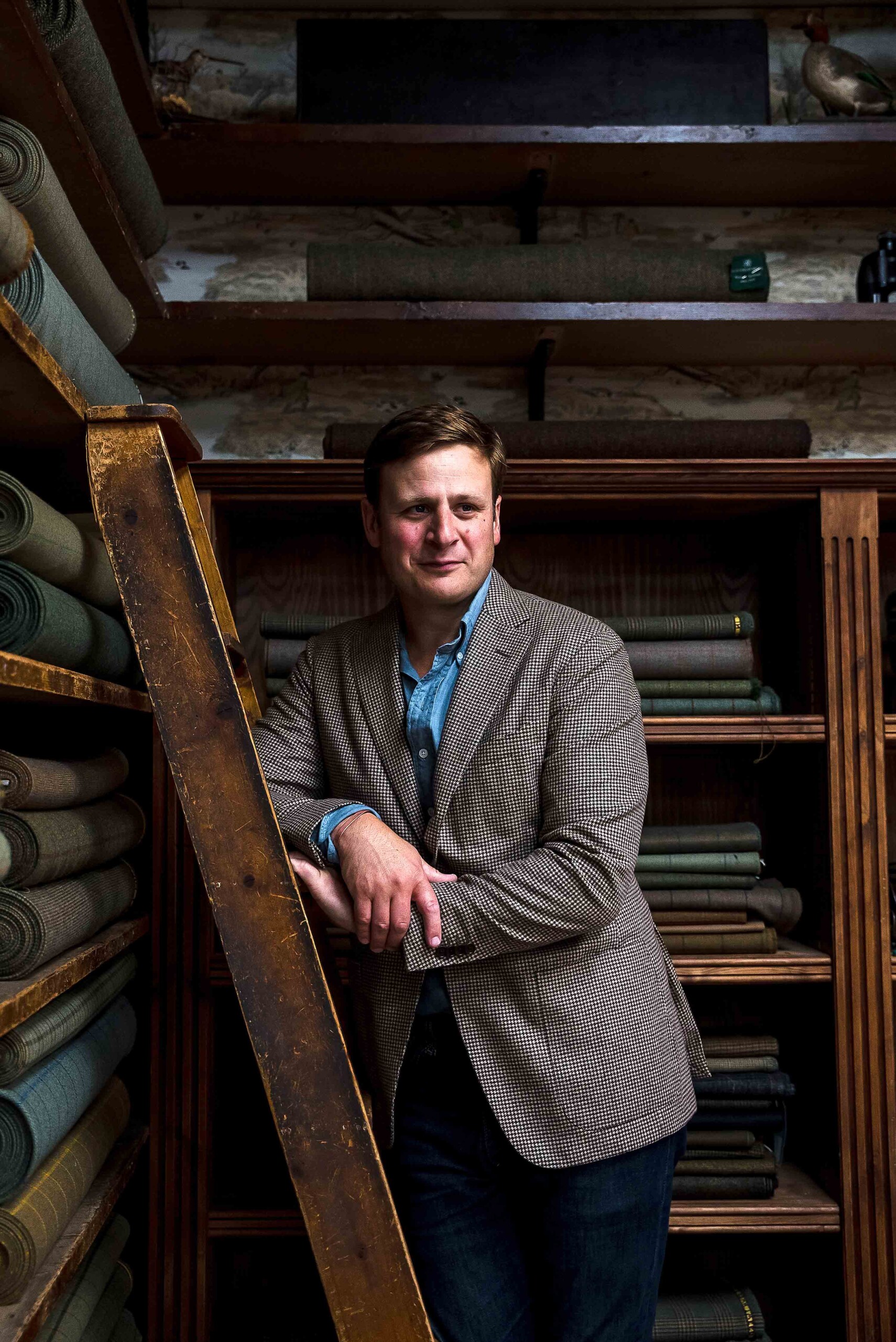
TYLER SHARP — Tell us a bit about your company history and how it got to where it is today.
JOHN SUGDEN — Established in 1858, Campbell’s of Beauly is an iconic privately-owned, family-run country tailor and outfitter, situated in the picturesque village of Beauly, 10 miles west of Inverness in the Scottish Highlands among many famous stalking estates, grouse moors and salmon rivers. Campbell’s was first established as a drapers shop, and over the years, under the Campbell’s stewardship, the company developed into weaving their own fabric, as well as tailoring. Thereafter, the retail store was developed.
The Campbell’s name is synonymous with quality craftsmanship and attention to detail, and we hold Royal Warrants with HM King Charles, as well as with HM Queen Elizabeth, as tailors and tweed mercers. Our tailoring niche is sporting tweeds and Highland dress, tailoring for numerous sporting estates across the UK, as well as many a Highland reels dance floor.
We (John and Nicola Sugden) took over the business from the Campbell family in 2015, and gently and tastefully have sought to revive the business’s fortunes while maintaining the store’s charming vintage feel. Often, a hidden gem of a business like Campbell’s can be ruined by the urge for instant growth, whereas what we seek here is simply a thriving family business that we can pass onto the next generation. We do not want to grow Campbell’s beyond the point that it loses its exclusivity.
Today, we have a thriving retail store, often a tourist destination given our remoteness, as well as an on-site bespoke tailoring workshop. Our focus is, quite simply, country style and traditions, and that is the lifestyle that we embody and embrace. In the Scottish Highlands, traditions remain strong, and hunting and fishing — particularly stalking — are part of the way of life. Each estate has its own estate tweed, and Campbell’s both weaves cloth and tailors for the sporting estates and their guests.
TS— How did you become a part of this company, and what road led you here? Tell us a bit about your background and how it contributed to the path you are on now?
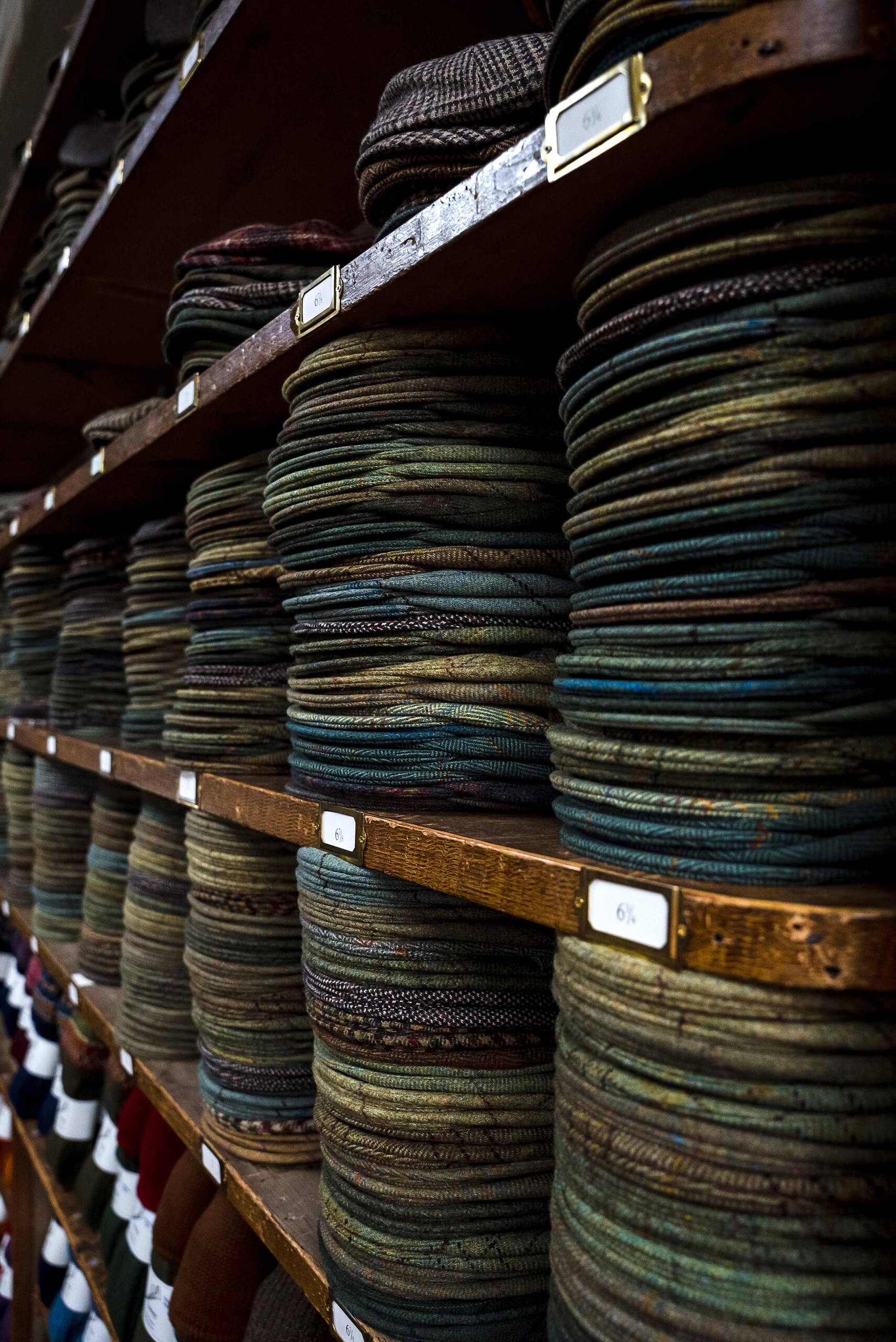
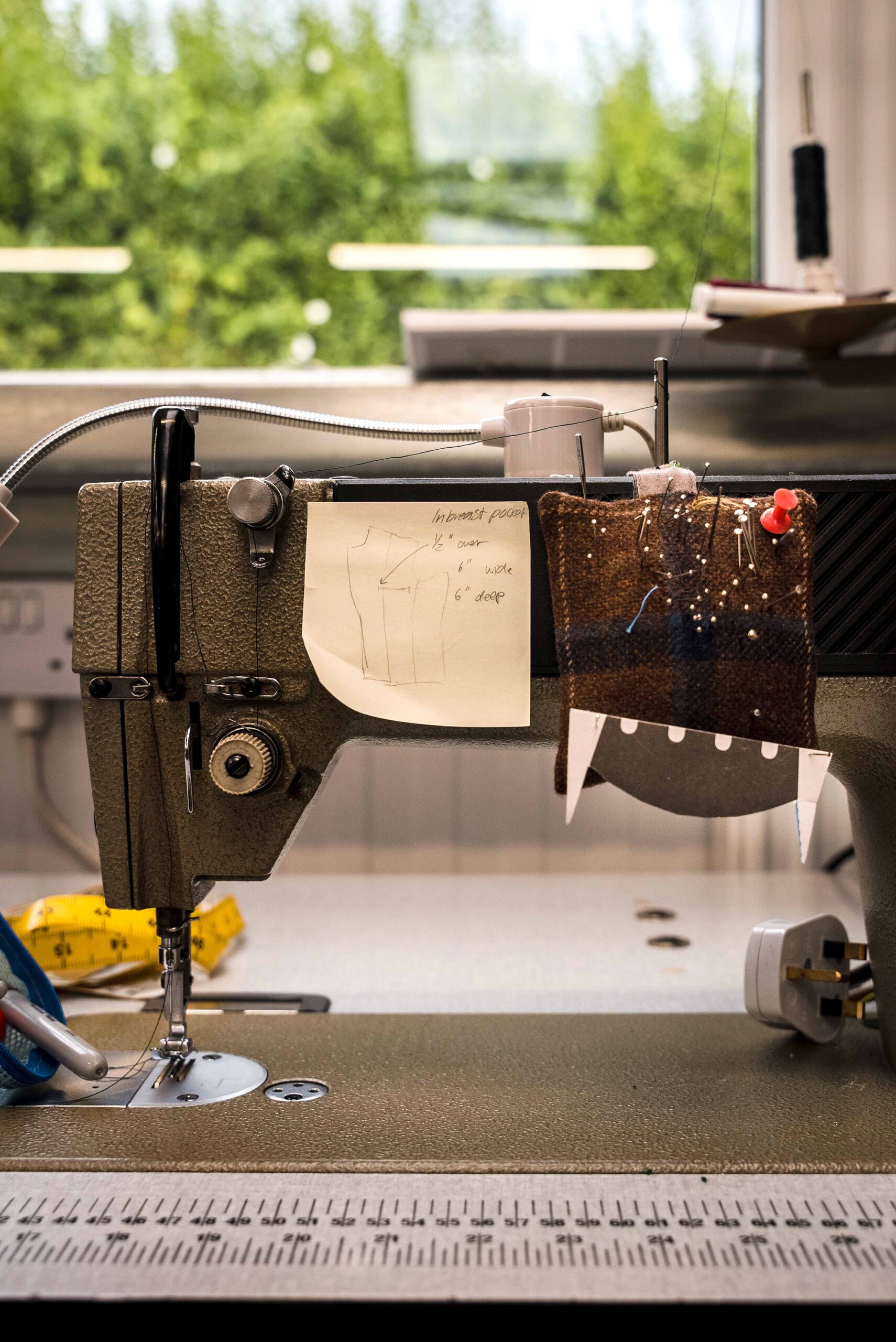
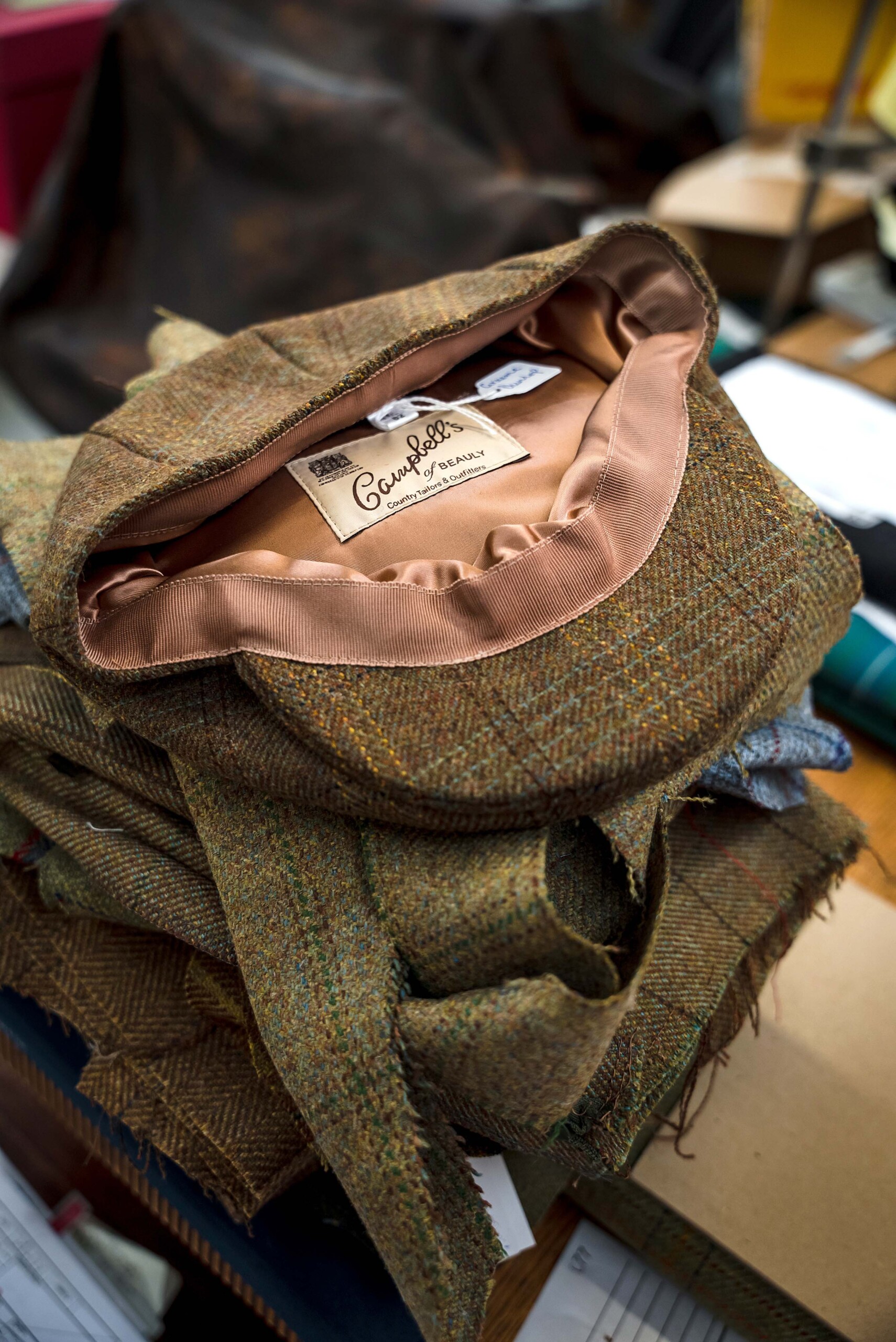

JS — I’m lucky that it was really a family affair, in that my mother’s and father’s families were both involved in the textile industry. My father’s family were weavers, and my mother’s spinners. After working for my mother’s family, my father moved north to Scotland and invested in a mill in the Highlands. After university, I followed and did a graduate traineeship, learning production from the raw material to yarn, knitting, weaving and finishing. Thereafter, I was posted at the London office and ran that for around nine years. I then moved onto Mackintosh, the original coat maker, where I learned further about retail and branding. After four years, I had the urge to do something myself, and Campbell’s was one of my first customers when I joined the sales team in my first job. With Nic being from the Scottish Highlands, and me having grown up there for over 10 years, it made perfect sense to give it a go. And here we are just shy of eight years later.
TS— What makes the work you do at Campbell’s of Beauly unique? Tell us about your approach to creating garments that are sophisticated and stylish but are meant for use in the field.
JS — I think, first and foremost, we tailor here on site, both cutting and make-up. That’s pretty unusual for a tailoring business, particularly given our remoteness. We also have a made-to-measure service that is sent away, allowing us to cater for clients who can only visit us once for a measuring appointment and thereafter would like their goods sent to them. Our retail store is pretty incredible, with all the fixtures and fittings being original. In terms of our clothing, we focus on tradition and practicality. Shooting/stalking tweeds are traditional, but wool is warm and durable, so there’s a reason they have stood the tests of time and are still in demand. But in terms of our style, I would simply say that thankfully, it’s timeless — it’s the way it always has been. If you’re crawling through heather all day, stalking up to a stag, you need freedom of movement in your wears! Comfort is paramount.
TS — It’s likely that some readers have never owned made-to-measure hunting clothing, so in your opinion, what would you want folks to know about your craft and how it could apply to them?
JS — Here in the UK, we’re lucky to be blessed with many traditions, thanks to our history and heritage. I think I’d want people to know that our company has been doing what it’s doing today since 1858, and while it’s a niche market, we clearly know what we’re doing in our field. We’re typically British, in that we don’t shout about it too much, we just get on with the day-to-day, and word-of-mouth has always done the talking for us. I’d like to think that if people are looking for a pair of bespoke tweed plus 4’s, we’d be the first company they’d think of. As I said earlier, our provenance is not contrived, it’s there for all to see.
TS— I’ve heard folks in the U.S. express skepticism about wearing tweeds to hunt versus technical clothing — what are your thoughts there? What advantages might tweed have over other highly designed and engineered products that seem to be flooding the market?
JS — First and foremost, tweed is an excellent camouflage on the hill. Certain estate tweeds will take their coloration from those shades that are on the land itself. Second, wool is extremely warm and durable. When stalking tweeds are wet, they’re still very warm. Finally, when you go somewhere new, it’s nice to fit in with the traditions of that area/country, and with the High- lands being the home of tweed, it’s almost the “done thing” to ensure you’re wearing the right tweed attire.
TS — What do you find most interesting about the tradition of tailoring and tweeds as it relates to the hunting culture in Scotland?
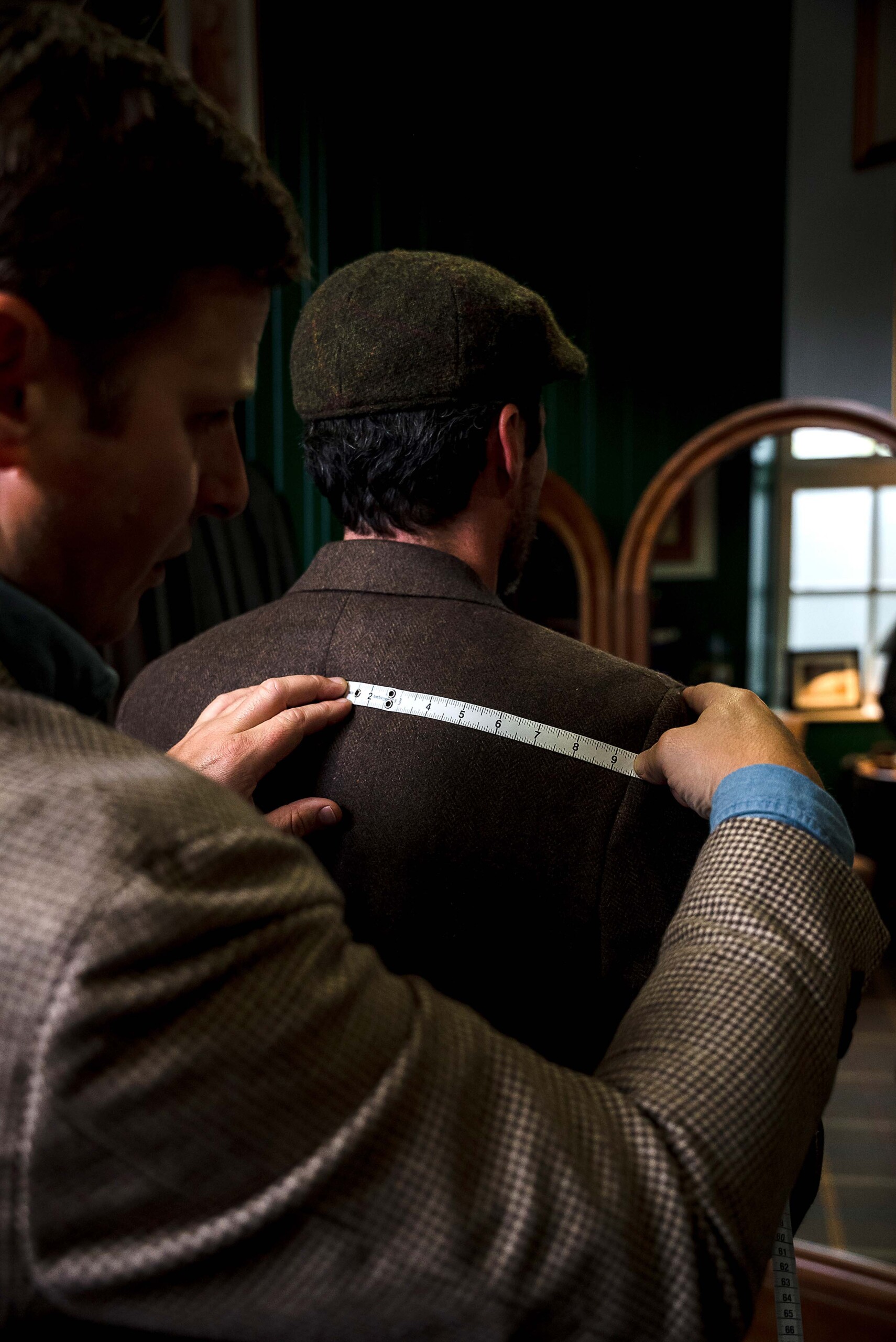
JS — Estate tweeds are historic. They are age-old patterns that have been passed on from generation to generation. Each estate has its own estate tweed. The estate tweed is essentially a camouflage born out of the land. The colors used in a particular estate tweed will be representative of those found in the surrounding landscape. So, for example, an estate with a rocky landscape would have a lot of gray in it, whereas bracken might be represented by brown, a grouse moor with purple, and often an estate with lots of gorse will have yellow in it. What I find most interesting is simply the longevity of these tweeds, in that they haven’t changed for a long, long time. I think there’s something very special about traditions and history like this. Stalking in the Highlands, one of my real passions, can be like stepping back in time, with the stalker in his Deerstalker hat and plus 4’s, and the ghillie with the ponies taking the carcass off the hill. It’s a rural and traditional way of life.
TS — How has your ability to source tweed changed in recent years?
JS — Sadly, it is becoming more and more difficult. The industry as a whole is struggling to entice young people to see it as a career path. More and more young people leave the rural Highlands for the city, making it very tricky to find the right people to learn the craftsmanship that we so passionately want to pass on to the next generation. That said, the industry has polarized, and I don’t think it will shrink further, as there are initiatives in place to persuade the young that it is a solid career path. I co-chair the textile school at Dumfries House, set up by King Charles III, to educate and train young people. The Future Textiles program looks to address the skills gap within the UK textile industry and encourage new entrants.
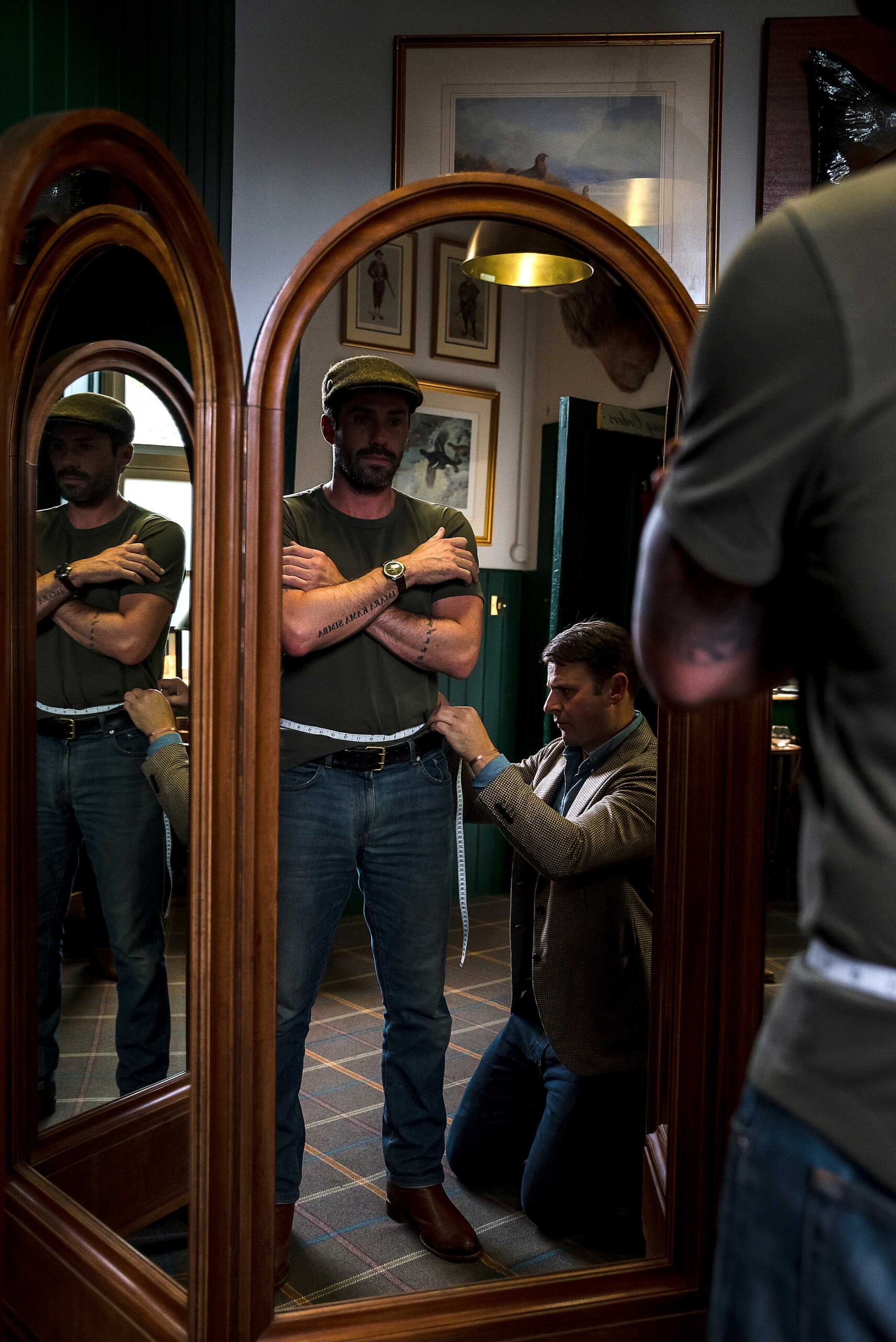
TS — In an ever-evolving world, do you feel it’s important that traditions like these continue in the modern age?
JS — In the Scottish Highlands, traditions remain strong, and hunting and fishing — particularly stalking — are part of the way of life. It is part of our history, and what we do is part of the culture in the Highlands. We must nurture our traditions and pass them onto the next generation. That’s our aim here at Campbell’s.
TS — In your experience, is hunting still well-received in the UK? Share some of your thoughts about public perception toward the Scottish hunting culture, and where there might be some misconception.
JS — There can always be a misconception about hunting. It is easy to portray it in a negative way, particularly with social media. I think we have to be very careful. What can be more sustainable than heading onto the hill and shooting a brace of grouse for the oven, or a woodcock, or even harvesting a deer for the freezer for the winter ahead? It’s much easier in many ways to portray it all in a negative way than a positive way. But in the remote Highlands, it creates a lot of employment, and it is done on a small scale. For example, it’s necessary to manage the deer numbers, for they have no natural predator, so it has to be done. There will always be those against it, but it’s up to us to educate them about what we do, and it’s not just about getting a trophy for your wall back home.
TS — What are some of the other things you’re involved in through the shop? Tell us about any adventures, events or conservation initiatives that you participate in.

JS — I always support the Game and Wildlife Conservation Trust, and assist with the annual Highland auction to raise funds, as naturally we have access to many estates with whom we work. The GWCT is a British charity conducting conservation science to enhance the British countryside for public benefit.
TS — What do you think the future holds for hunting and shooting traditions, and is there any- thing we can do to better preserve them?
JS — I think it’s simply about educating people on what we actually do. Education, education, education! And while we can harness social media to do this at times, we must ensure that what we do is portrayed in a positive light. Trophy photos are not constructive for the longevity of the sport.
TS — Any final thoughts? A book you’ve been reading, an inspiring person or something that you’re very excited about? Would love to wrap this up on an inspiring note.
JS — I particularly enjoyed reading a book given to me by a great friend recently, Mungo Ingleby, who runs Sporting Lets. It’s called Deer People, about twenty-four working lives dedicated to deer in the Scottish Highlands. It’s a fascinating read. I particularly enjoyed reading about Peter Fraser, for many years the head stalker at Invercauld, and after retiring, now the ghillie at Birkhall. He’s an amazing man, very old-school, with the most wonderful Aberdeenshire accent. Then I particularly enjoyed a comment by Michael Wigan, a journalist who lives further north at Borrobol Estate: “I’m fascinated by it all. The rut ends here by the beginning of November, the burns are full of spawning salmon, so the drama and renewal of Highland life just rolls forward.” I couldn’t agree more, wouldn’t want to live anywhere else, and look forward to a memorable stalk in the coming weeks and a hot peaty bath after with a strong, smoky scotch.
Related Stories

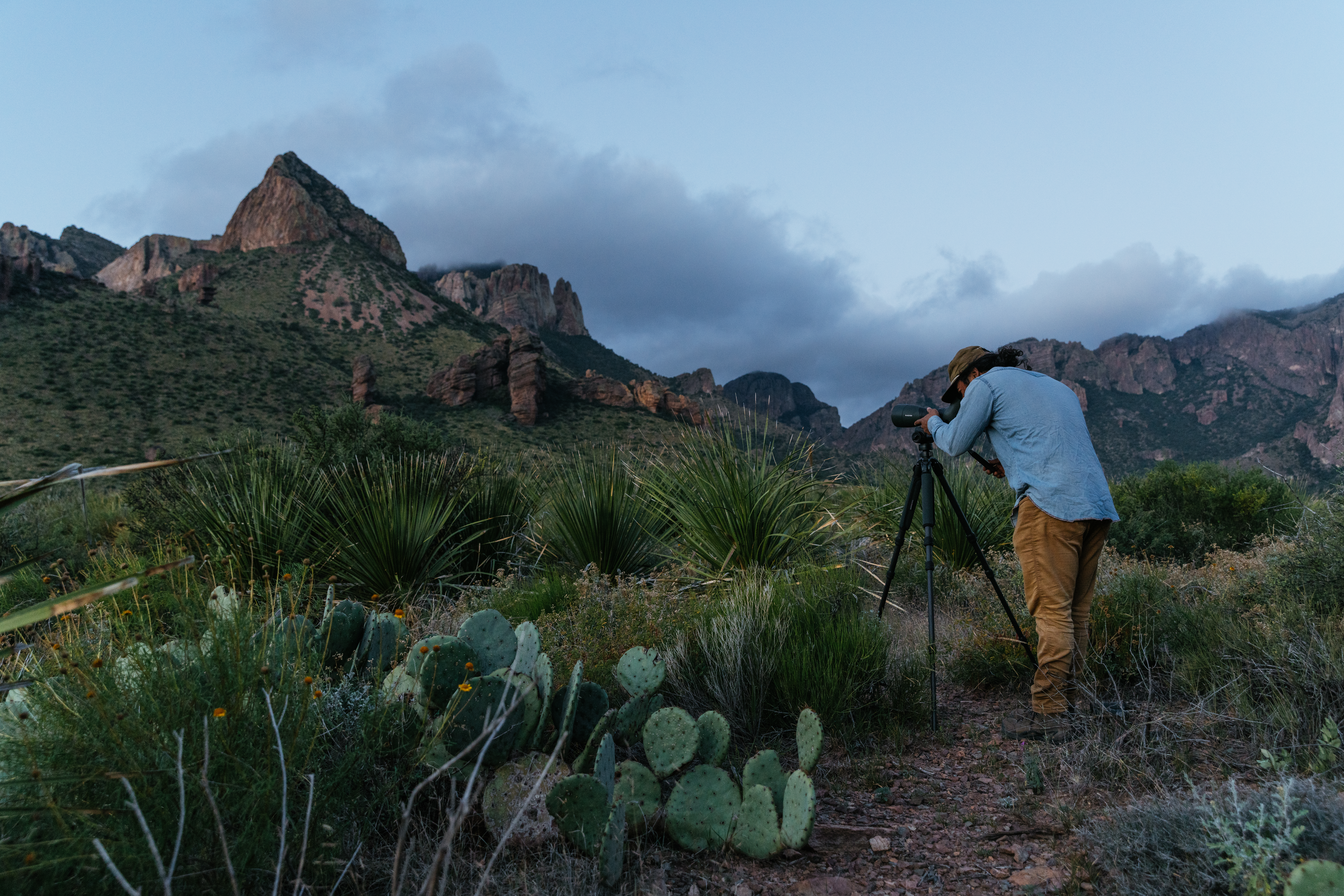
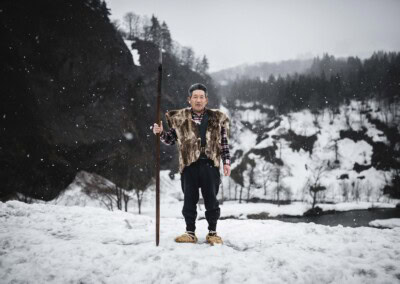
Latest Stories
